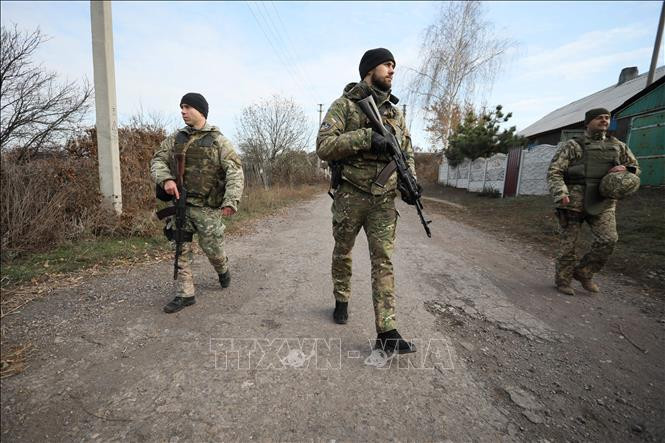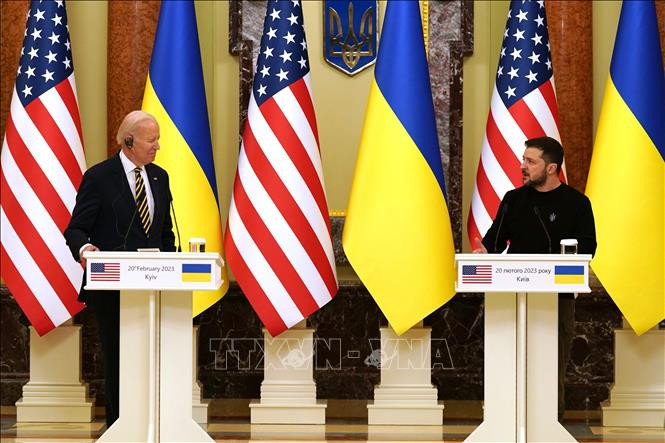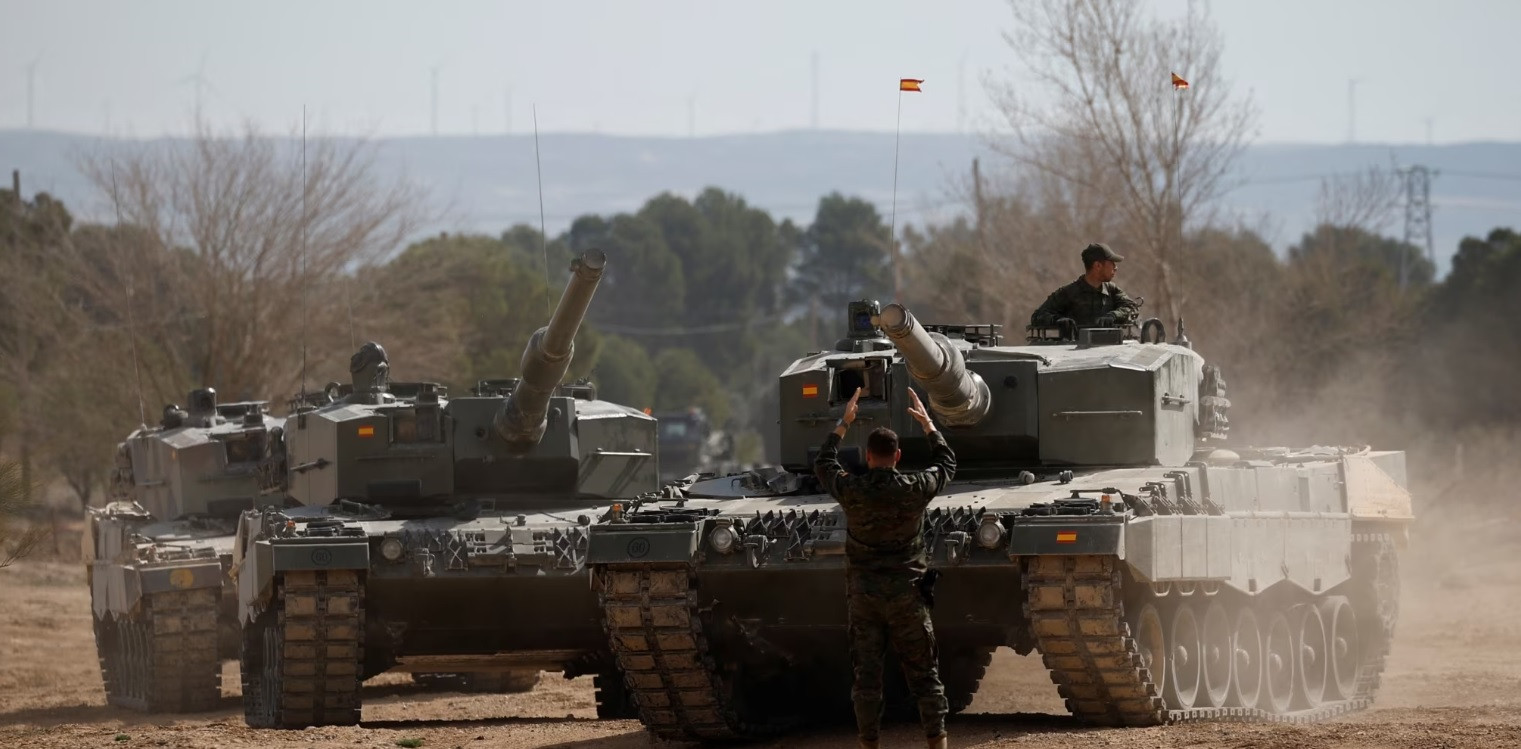Western sanctions have not worked. Allied weapons are running out. Pressure may mount on Kiev to find a solution from a position of weakness.

Two years after the conflict broke out, the US had the capacity to provide Kiev with weapons, technology and intelligence to counter Russia. But across Europe there is now a perception that Washington has lost that will.
The Europeans, by contrast, have the will—they just pledged an additional $54 billion to rebuild Ukraine—but when it comes to repelling Russia's renewed offensive, they lack the ability.
That is the essence of the conundrum facing Ukraine and its NATO allies as the conflict enters its third year.
It was a stunning reversal. Just a year ago, many here predicted that a Ukrainian counteroffensive, backed by European tanks and missiles as well as American artillery and air defenses, could push the Russians back to their former positions by February 24, 2022.
But some harsh lessons have emerged. President Biden declared in Warsaw in March 2022 that sanctions were supposed to collapse the Russian economy—“the ruble was almost immediately in ruins.” The International Monetary Fund’s prediction that Russia’s economy would shrink significantly was correct in the short term; it is now growing faster than Germany’s. Russia’s oil export earnings are larger than they were before the conflict.
Given the setbacks, and the failure of Ukraine's counteroffensive, hopes appear to be fading that President Putin will soon conclude that Russia has no further gains to make and should engage in serious negotiations to end the conflict.
By contrast, American and European intelligence officials now assess Mr Putin as determined to stick to his stated goals in Ukraine.
Strategic stalemate
At the heart of the current strategic impasse over Ukraine is the absence of any serious prospect of a negotiated solution.
As recently as last summer, senior members of the Biden administration held out hope that Ukraine’s advances on the battlefield would force Russia to find a face-saving way out. The most commonly discussed possibility was a negotiated settlement that would not specify the future of the Russian-controlled or annexed regions of Ukraine, but would at least end the fighting.
At the same time, at the NATO summit in Vilnius, Lithuania, Biden and his aides discussed with President Volodymyr Zelensky an “Israeli model” of aid for Ukraine. Even if Kiev lacks full NATO membership, the plan seeks to provide decades-long guarantees of the weapons and training Ukraine will need to defend against Russia.
But even hopes for those vague outcomes have been pushed aside amid debate in the US Congress over extending short-term aid to Ukraine and pessimism about whether Ukraine can hold out long enough to think long term.
As isolationism rose in the Republican-controlled Congress and supported Mr. Trump, President Biden shifted from promising to provide Ukraine “whatever they need, for as long as it takes” to a less ambitious promise last December, “for as long as we can.”
At the Munich Security Conference last weekend, Republican Senator JD Vance, struck an even more sobering note: Ukraine will have to learn to fight on a shoestring budget. Even if “an additional $61 billion in aid to Ukraine is approved, I have to be honest with you, that’s not going to fundamentally change the realities on the ground. The amount of ammunition that we can send to Ukraine right now is very limited,” he said.
That means the United States should seek to initiate negotiations to end the conflict in Ukraine, according to Charles A. Kupchan, a Georgetown University professor who served as a national security official in the Obama administration.
“Even if Russia could continue down this path, I don’t think Ukraine could,” he said. After two years of war, “there is no predictable path to victory on the battlefield for Ukraine,” even with the arrival of long-range missiles or F-16 fighter jets, Mr. Kupchan said.
Tough Choices
According to Professor Kupchan, President Zelensky faces a difficult choice: whether to hold on to every inch of Ukraine's sovereign territory or seek to secure an economically viable state, with a democratic future, Western security guarantees and, ultimately, membership in the European Union and NATO.
Several senior Biden administration officials said they tried to push Mr. Zelensky in that direction. But Mr. Biden directed his officials not to stray from his mantra: “Nothing about Ukraine without Ukraine.”

As a result, American military officials in Europe, led by Gen. Christopher G. Cavoli, have quietly warned that the best the Ukrainians can hope for is a conflict that is essentially frozen.
General Cavoli rarely speaks publicly, but officials who have recently met with him have described an optimistic assessment that, in the best case scenario, Ukraine will use 2024 to defend itself, build up its military, and launch another counteroffensive next year.
Even in Europe, where support for Ukraine is strongest, public opinion is shifting. In a recent poll conducted in January for the European Council on Foreign Relations in 12 countries, just 10% of Europeans said they believed Ukraine would win the war, although what constitutes victory remains unclear. Twenty percent said they believed Russia would win, and a majority, 37%, thought the conflict would end in some form of settlement.
Europe at great risk
For years, American officials have been urging Europe to spend more on defense. Now, Europeans are starting to face the costs of complacency.
Regardless of who Americans elect as their next president in November, the United States may no longer be willing to play its traditional leadership role in deterring Russia or defending Europe. That would certainly put an additional burden on an already ill-prepared Europe.
German Defense Minister Boris Pistorius warned that the German military is better equipped but does not have the size or skill level needed to meet the challenges ahead. Finland adds significant technological capabilities to NATO, but US officials say the Swedish military will need to be rebuilt.

Meanwhile, Europe is preparing aid packages for Ukraine that were initially intended to supplement, but may now be intended to replace, aid from the United States.
This month, European Union leaders pledged an additional 50 billion euros, or about $54 billion, in aid to Ukraine over the next four years. Overall, European countries have outpaced the United States in providing aid to Ukraine.
But to fully replace US military aid this year, the Kiel Institute for the World Economy estimates, Europe would still have to “double the current level and pace of arms support.” That’s not to mention that European efforts to provide an additional €5 billion ($5.4 billion) over the next four years to buy weapons for Ukraine have stalled because of opposition from Germany and France. And a European promise to provide a million artillery shells to Ukraine by March has fallen through.
While Europeans proudly point to the changes they have made, it is not certain that those changes are happening as quickly as the world demands, especially when it comes to Ukraine.
THU HANG/Tin Tuc Newspaper